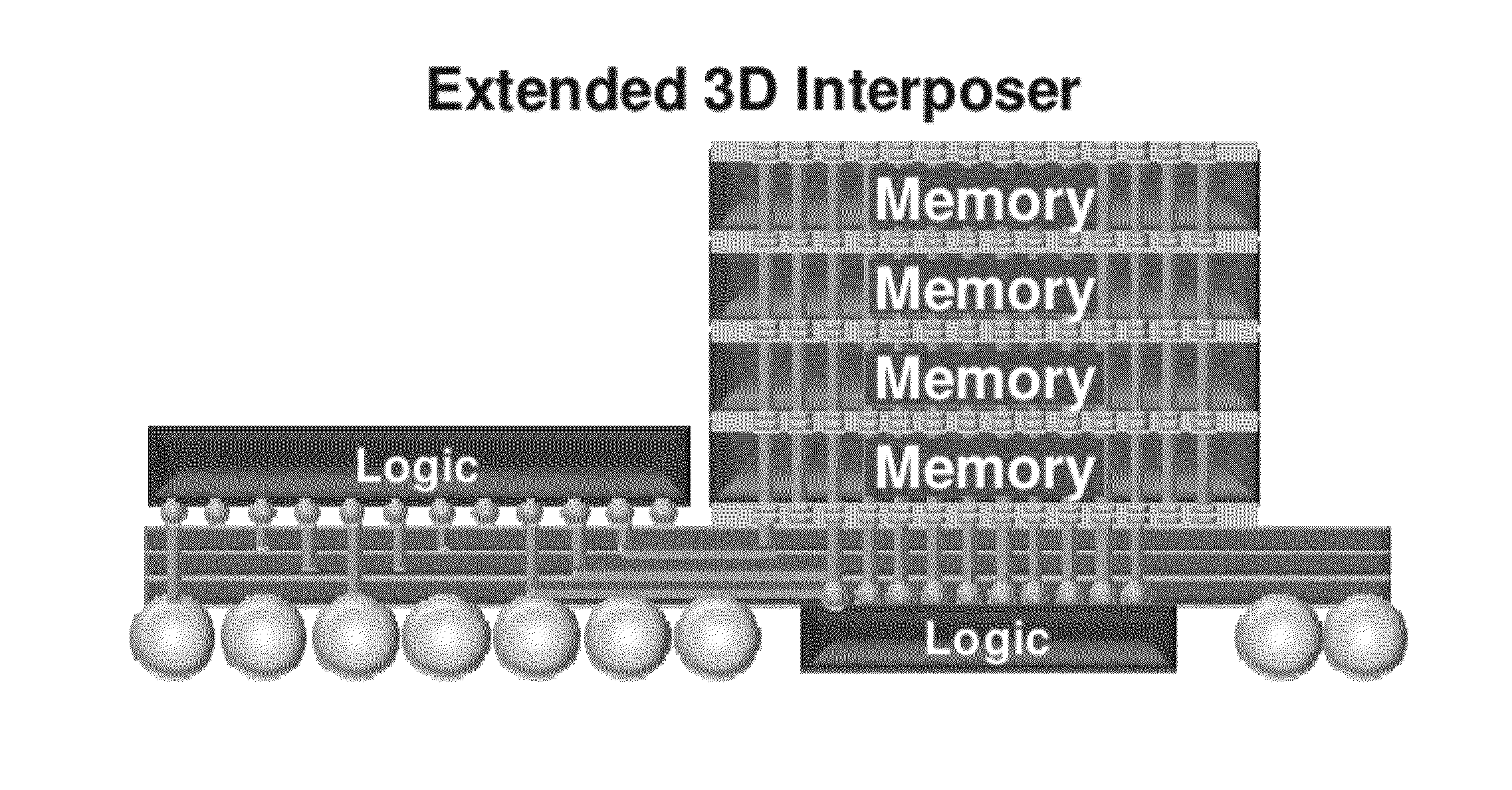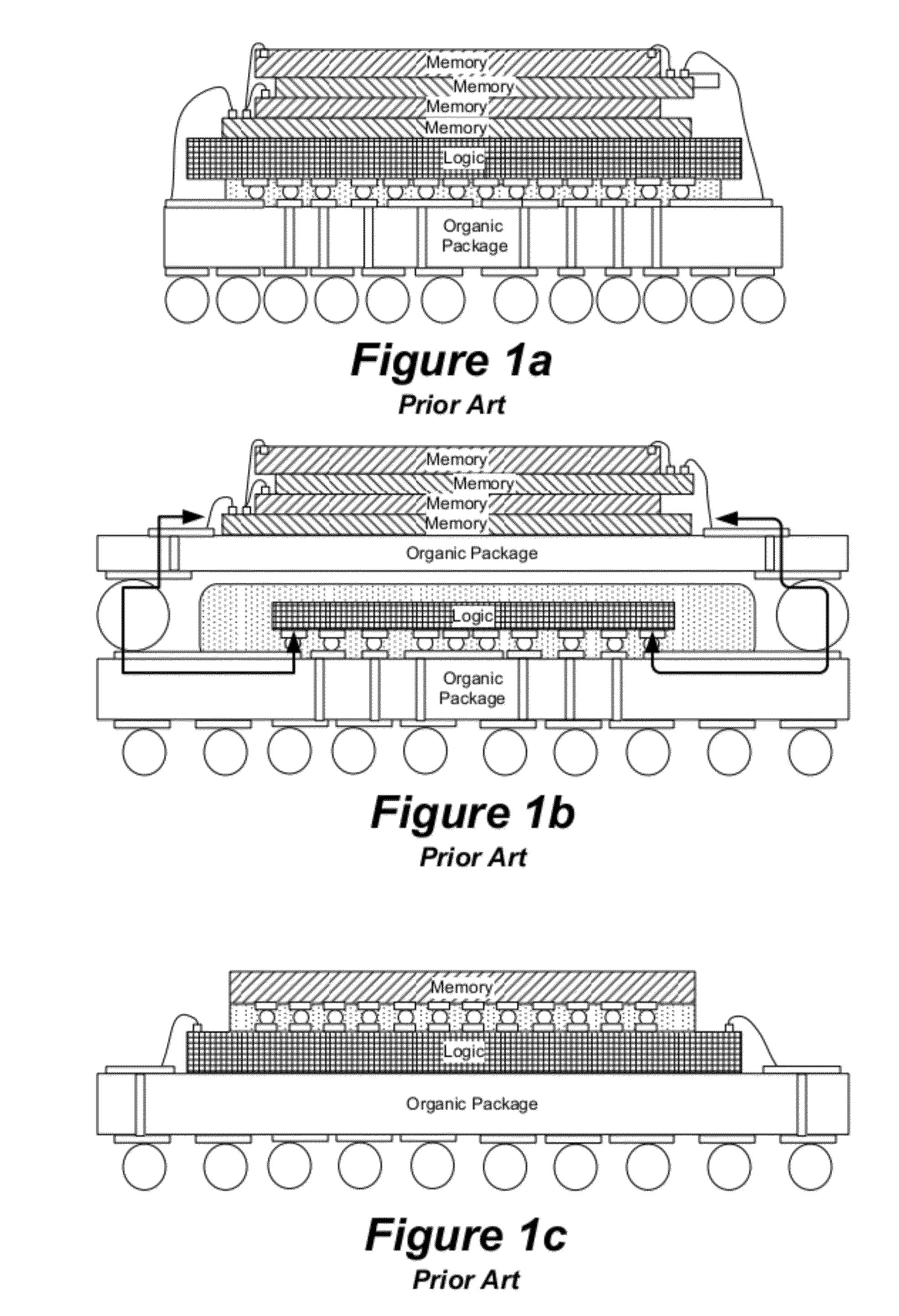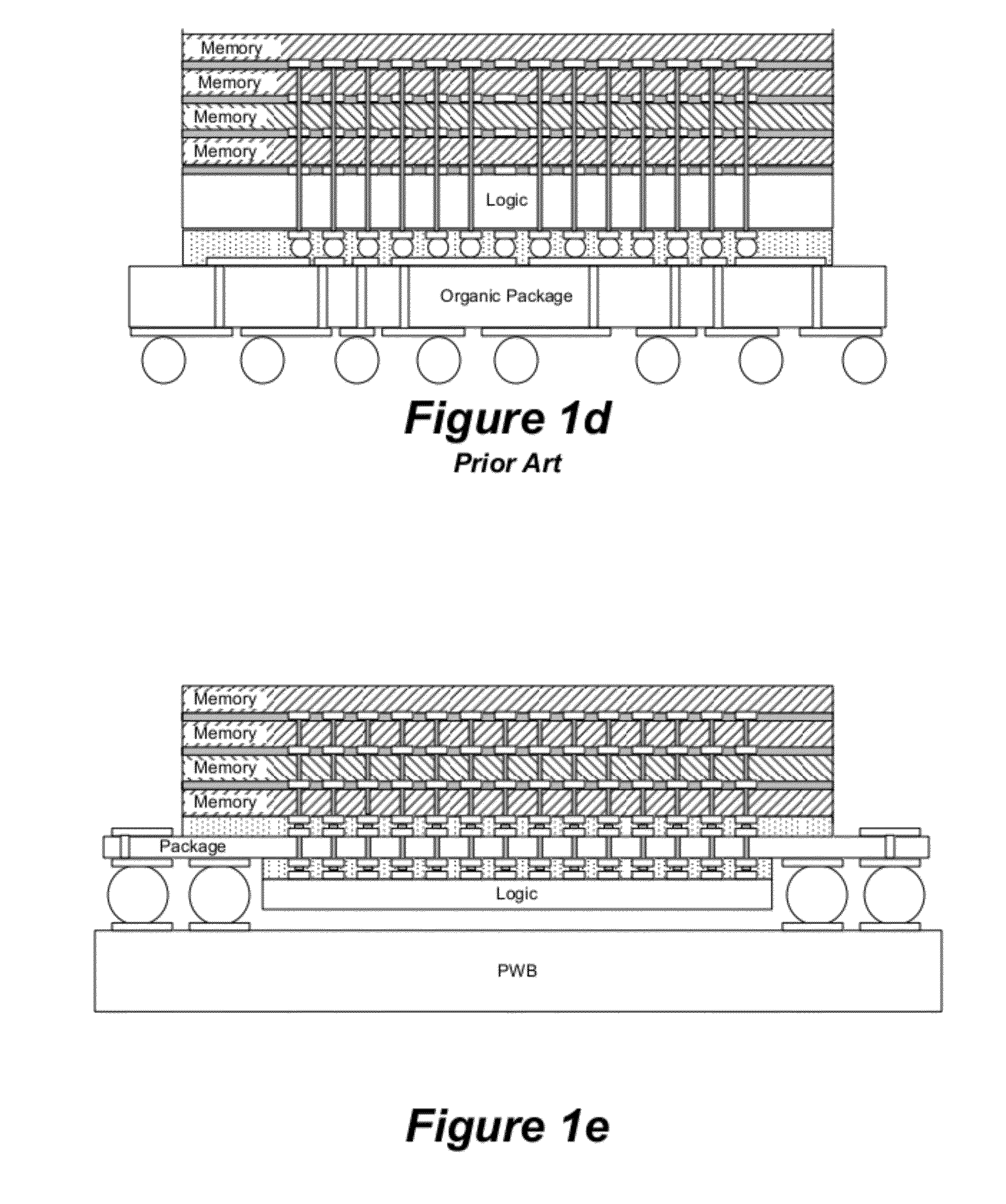Ultra-thin interposer assemblies with through vias
a technology of interposer assemblies and vias, which is applied in the direction of electrical apparatus contruction details, printed circuit non-printed electric components association, and semiconductor/solid-state device details, etc. it can solve the problems of increasing the number of chip-to-chip interconnections, preventing these structures from providing high bandwidths without significant increase in power consumption, and cannot scale to multiple chips or sub-systems
- Summary
- Abstract
- Description
- Claims
- Application Information
AI Technical Summary
Benefits of technology
Problems solved by technology
Method used
Image
Examples
example # 3
Example #3
TPV Fabrication Process
[0087]FIG. 23 illustrates the process flow used to fabricate the TPV in a polycrystalline silicon panel.
example # 4
Example #4
TPV Formation
[0088]Several methods for TPV formation in polycrystalline silicon were explored as the traditional DRIE processes are too slow to drill TPVs in silicon interposers of about 220 μm thick polycrystalline silicon. To solve this problem, TPV formation by laser ablation (UV, excimer and pico-second lasers) was studied. Top and bottom views of the vias fabricated by three types of lasers are compared in FIG. 24.
[0089]The UV laser with a wavelength of about 266 nm was faster but resulted in large via entrance diameters ranging from about 75-125 μm. The via exit diameter (ranging from about 50-100 μm) was smaller than the entrance diameter, indicating significant via taper. The excimer laser was able to drill smaller vias (about 10-20 μm diameter) than the UV laser. The excimer laser was able to form nearly vertical TPV sidewall without micro-cracking due to minimal thermal damage to the silicon material. Excimer laser processing can be scaled to higher throughput by...
example # 5
Example #5
Polymer filling and Liner Formation
[0091]A novel polymer liner approach is presented to replace the current combination of SiO2 and diffusion barriers used in the processing of CMOS-based silicon interposers. The technical approach involves polymer filling of TPV, followed by laser ablation to form an “inner” via resulting in a via side wall liner of controlled thickness.
[0092]The laser drilled silicon samples were first cleaned using a plasma treatment. About 30 μm thick polymer film was laminated to cover the surface and fill the TPVs. This was done by an optimized double-side lamination process with hot press, resulting in void-free filling without cracking the silicon. FIG. 26 shows the optical cross-sectional image of polymer laminated silicon substrate with polymer-filled TPV (about 125 μm and about 100 μm via entrance and exit diameter respectively). Adhesion between polymer and silicon was checked by initial tape test for peel strength and the samples showed good a...
PUM
 Login to View More
Login to View More Abstract
Description
Claims
Application Information
 Login to View More
Login to View More - R&D
- Intellectual Property
- Life Sciences
- Materials
- Tech Scout
- Unparalleled Data Quality
- Higher Quality Content
- 60% Fewer Hallucinations
Browse by: Latest US Patents, China's latest patents, Technical Efficacy Thesaurus, Application Domain, Technology Topic, Popular Technical Reports.
© 2025 PatSnap. All rights reserved.Legal|Privacy policy|Modern Slavery Act Transparency Statement|Sitemap|About US| Contact US: help@patsnap.com



